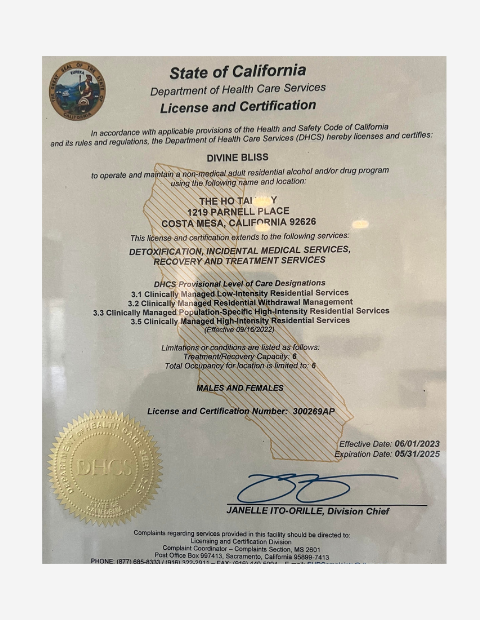EMDR Treatment for Trauma
Eye Movement Desensitization and Reprocessing (EMDR) is an evidence-based psychotherapy used to heal trauma and PTSD.
Why Trauma Needs to Heal
Traumatic experiences throughout life can have a lasting impact on emotional and physical well-being. When trauma is too much for the mind to process, it gets “stuck” in the brain. This can lead to the brain’s “fight or flight” response remaining activated long-term, making it challenging to feel safe. Untreated trauma can also become Post-Traumatic Stress Disorder (PTSD).
The body is also impacted by the physical stressors of the fight or flight response, which can cause chronic illness. Unresolved trauma often leads to substance use to self-medicate emotional and physical pain. Substance use can then create addiction, and if trauma is not managed well, relapse is more likely. The mind, body, and spirit need healing from trauma to move forward from addiction.
At The Ho Tai Way – Recovery for Women, we understand trauma and the need for healing.
How EMDR Therapy Works
The concept behind EMDR is to reprocess traumatic memories in the brain so the fight or flight response is no longer activated by the trauma or related triggers. Unresolved trauma can make a person feel unsafe, even when there is no longer a threat. Reprocessing painful memories allows the brain to resolve them naturally and helps patients integrate them into memories rather than present threats.
The actual process of EMDR is relatively simple. The therapist uses eye movement, tapping, or another physical distraction while the traumatic memories are recalled. The stimulation caused by the specific eye movement allows the brain to reprocess the memory, essentially removing the association of threat from the traumatic memories during the process. The eye movement is similar to the body’s natural eye movements during REM sleep, which is essential to replenishing and healing the mind and body each day.
Physically, eye movement activates the parasympathetic nervous system known for regulating the “rest and digest” process. This allows the body to calm down from the constant stressors of the fight or flight response, which is regulated by the sympathetic nervous system. Basic functions of breathing and heart rate can return to normal. EMDR can be like a light switch for the body, allowing normal responses to outside stimuli to resume.
Why EMDR Is So Effective
Unresolved trauma is like a wound that does not heal but festers and causes more pain. Healing comes when the trauma is resolved and the natural functions of the mind and body can be restored. By using the brain’s own ability to heal itself, EMDR occurs very quickly. Most patients can accomplish in 3-12 sessions of 60-90 minutes what could take years of talk therapy to heal. The healing from EMDR is also lasting, allowing the patient to leave the trauma behind.
Due to the effectiveness in healing from trauma, EMDR has become one of the most trusted therapeutic methods in healing from trauma. It has been shown to heal many types of trauma successfully, including witnessing and experiencing one or more of the following:
- Emotional abuse
- Physical violence
- Sexual assault
- Loss of a loved one
- War or terrorism
- Natural disasters
- Serious injury or illness
- Childhood trauma
EMDR in Addiction Treatment
Treatment for addiction requires achieving sobriety and healing from the causes of substance abuse. The pain from traumatic experiences in childhood or throughout life is one of the most common reasons people begin abusing substances. The Ho Tai Way – Recovery for Women utilizes EMDR in addiction treatment because so many of our patients have experienced trauma in their lives.
Relapse in addiction occurs for many reasons, but patients remove the underlying cause of their substance abuse by resolving the trauma. By using EMDR to heal the mind and body from traumatic experiences, the chances of relapse decrease significantly.
Moving on With EMDR
When a bone is fractured and then heals, the body is able to resume daily activities. EMDR allows the mind and body to heal from trauma, not unlike the healing of a fracture. In addition to integrating traumatic memories into the network of memories without that constant feeling of being unsafe, EMDR allows the patient’s mind to develop adaptive skills in relation to those events. These adaptive skills are also cultivated for day-to-day processing of experiences in the present and future. Healing with EMDR allows the patient to move forward with safety and confidence.
EMDR at The Ho Tai Way
Women experience trauma at significantly higher rates than men. At the Ho Tai Way – Recovery for Women, our mission is to heal the mind, body, and spirit. This holistic approach requires that we look at not only the physical manifestations of addiction, but also their root causes. We use a trauma-informed approach to healing, and EMDR is one of the most effective ways we treat it.
No two people are the same, so we use an individualized approach in treatment. What works for one patient may not work as well for another, so we offer many types of therapy. EMDR is one of our most effective evidence-based therapeutic modalities used in the treatment of trauma. Patients can use other modalities in conjunction with EMDR to address the entirety of their addiction.
Trauma-informed care is a basic tenet of treatment at The Ho Tai Way – Recovery for Women. Contact our Costa Mesa, California facility at (714) 581-3974 to learn more about healing with EMDR.











